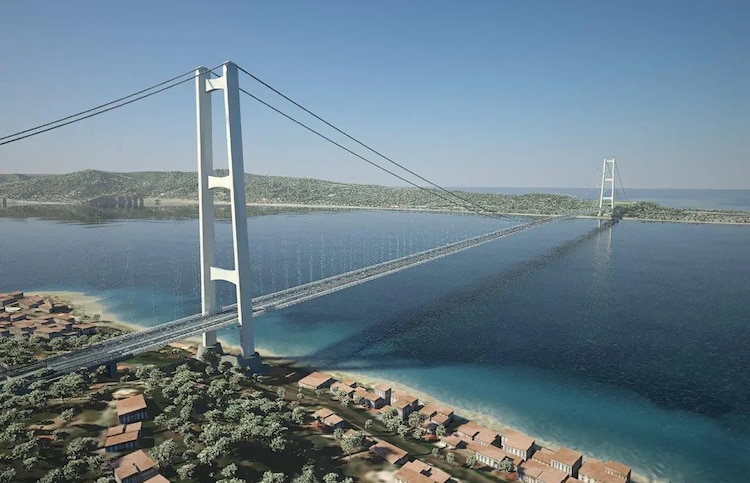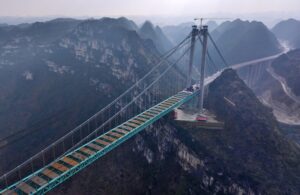Italy has approved a €13.5 billion (approximately $15.5 billion) infrastructure project to build the longest suspension bridge in the world, connecting the Italian mainland to the island of Sicily across the Strait of Messina.
The decision was confirmed by the Italian Transport Ministry following a vote by the interministerial committee for strategic public investments. The structure, known as the Strait of Messina Bridge, will stretch 3.7 kilometers, with a suspended central span of 3.3 kilometers, surpassing the current record held by Turkey’s 1915 Çanakkale Bridge.
Italian Transport Minister and Vice Premier Matteo Salvini, speaking at a press conference in Rome, described the initiative as “the biggest infrastructure project in the West.” He added, “From a technical standpoint, it’s an absolutely fascinating engineering project.”
The bridge is designed to carry three vehicle lanes in each direction and a double-track railway, with the capacity for 6,000 cars per hour and 200 trains daily.
According to Salvini, crossing time between Sicily and Calabria will be reduced from up to 100 minutes by ferry to 10 minutes by car, while trains will save approximately two and a half hours of travel time.
Italian Prime Minister Giorgia Meloni stated, “The bridge will be an engineering symbol of global significance.”
Construction is expected to begin in 2026, following preparatory work slated for late September or early October 2025, pending approval from the Court of Audit. The bridge is scheduled for completion between 2032 and 2033.
The project is led by a consortium headed by Italian engineering firm Webuild, which initially secured the contract in 2006 before the project was shelved. Pietro Salini, CEO of Webuild, said, “The Strait of Messina Bridge will be transformative for the whole country.”
Supporters of the bridge stated its economic benefits, including an estimated 120,000 jobs annually, and additional infrastructure development in southern Italy. “It will accelerate growth in economically lagging southern regions,” Salvini said.
The bridge has also been discussed in the context of NATO defense spending, with the government considering its classification as dual-use infrastructure. “The project enhances Italy’s strategic capacity for rapid troop and equipment deployment to NATO’s southern flank,” Salvini noted.
The classification could allow Italy to count part of the bridge cost toward its goal of allocating 5% of GDP to defense, including a 1.5% security component.
However, this potential military designation has faced opposition. In a letter signed by more than 600 professors and researchers, critics argued that such classification may render the bridge a target and would require further testing to assess its suitability for military logistics. “Designating the bridge as a military structure raises complex legal and security implications,” the letter stated.
Environmental organizations have also filed complaints with the European Union, warning that the project threatens critical bird migration routes and lacks sufficient justification of public benefit. The Italian government has not yet published a comprehensive environmental impact reassessment.
Concerns about organized crime infiltration remain prominent. Although the originaal decree gave the Interior Ministry anti-mafia oversight, the President of Italy insisted the project remain under national anti-mafia laws applicable to all major public works. Salvini affirmed that the project would follow “the same protocols used for Expo 2015 and the Milan-Cortina 2026 Winter Olympics,” and added, “We need to pay attention so that the entire supply chain is impermeable to bad actors.”
The design of the bridge takes into account the Messina seismic fault, which was responsible for the 1908 earthquake that killed tens of thousands. Webuild has said that suspension bridges, with their inherent flexibility, are well suited to earthquake-prone regions. According to the company, similar designs have performed well in seismically active countries including Japan, Turkey, and the United States.
Meanwhile, China has announced the near-completion of the Huajiang Grand Canyon Bridge in Guizhou Province, which, at 625 meters (2,051 feet) from deck to river, will be the tallest bridge in the world by structural height.
Though not as long as the Italian project, the Chinese bridge poses unique engineering challenges and includes features for tourism, including what will become the highest bungee jump platform globally.




